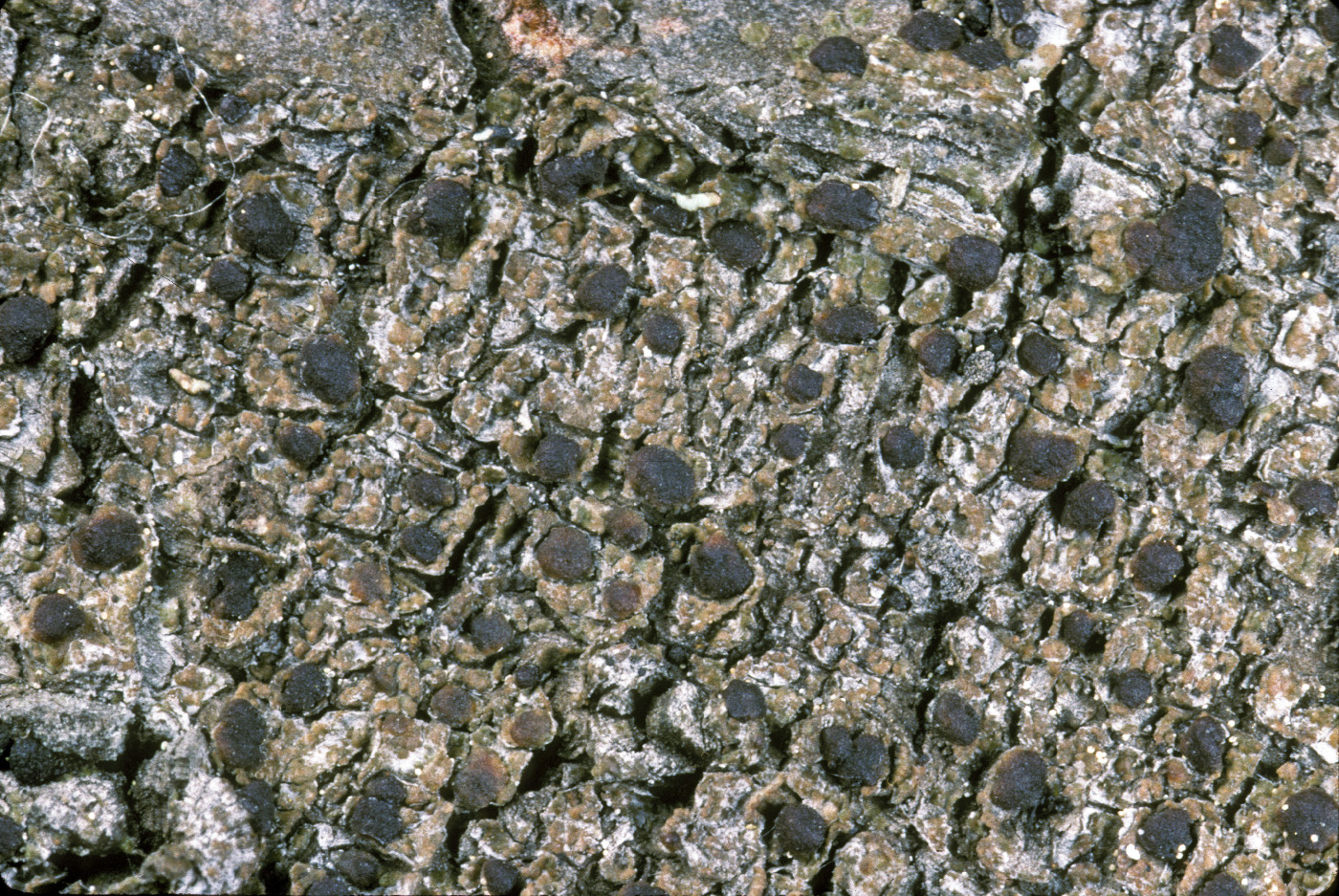
Consortium of Lichen Herbaria
- building a Global Consortium of Bryophytes and Lichens as keystones of cryptobiotic communities -
- Home
- Search
- Images
- Species Checklists
- US States: O-Z >
- US National Parks
- Central America
- South America
- US National Parks
- Southern Subpolar Region
|
Family: Ramalinaceae |
Nash, T.H., Ryan, B.D., Gries, C., Bungartz, F., (eds.) 2004. Lichen Flora of the Greater Sonoran Desert Region. Vol 2. Life habitat: lichenized Thallus: crustose, areolate to continuous surface: pale green, pale brown, or yellow (soredia); esorediate or sorediate, lacking isidia photobiont: primary one a trebouxioid green alga with cells up to 15 µm wide; secondary photobiont absent Ascomata: apothecial, usually sessile, flat to hemispherical (sub-spherical) disc: chestnut brown, dull to glossy exciple: reduced, weakly gelatinized, having the same structure as hamathecium epihymenium: brown, without crystals, pigment sometimes streaking into hymenium hymenium: hyaline to pale brown, with or without oil drops; paraphyses: moderately to strongly branched and anastomosing, basally colorless, with a distinct dark brown pigment caps subhymenium and hypothecium: hyaline or patchy brown asci: a slightly distorted version of the Lecidellatype with an I+ blue tholus and a conical, lighter blue axial body; subglobose to broadly clavate, 8-spored (but reductions frequent) ascospores: hyaline, simple, ellipsoid, ovate-ellipsoid, or globose, thick-walled (2-3-layered) Conidiomata: pycnidial, rare conidia: hyaline, simple, bacilliform Secondary metabolites: xanthones and bis-xanthones, and a depsidone (all in J. subaurifera only) Geography: in temperate, boreal, arctic, and antarctic areas Substrate: bark of trees and shrubs, wood, rock (rarely), and over plant remnants. Notes: Japewia is characterized by having a crustose thallus, biatorine apothecia with a reduced exciple that resembles the hamathecium, asci +like those of the Lecidella and extremely thick-walled ascospores, that resemble those of Mycoblastus, and conidiogeneous hyphae of type V, which are otherwise common in Parmeliaceae. Mycoblastus is distinguished by having a well developed exciple and 12 spored asci with an I+ dark blue cap over the ascus |
Powered by Symbiota









